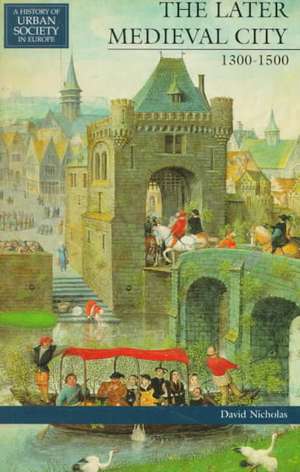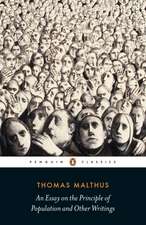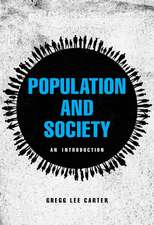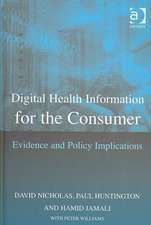The Later Medieval City: 1300-1500: A History of Urban Society in Europe
Autor David Nicholasen Limba Engleză Paperback – 18 apr 1997
David Nicholas begins with the economic and demographic realignments of the last two medieval centuries. These fostered urban growth, raising living standards and increasing demand for a growing range of urban manufactures. The hunger for imports and a shortage of coin led to sophisticated credit mechanisms that could only function through large cities. But, if these changes brought new opportunities to the wealthy, they also created a growing problem of urban poverty: violence became endemic in the later medieval city.
Moreover, although more rebellions were sparked by taxes than by class conflict, class divisions were deepening. Most cities came to be governed by councils chosen from guild-members, and most guilds were dominated by merchants. The landowning elite that had dominated the early medieval cities of the first volume still retained its prestige, but its wealth was outstripped by the richer merchants; while craftsmen, who had little political influence, were further disadvantaged as access to the guilds became more restricted.
The later medieval cities developed permanent bureaucracies providing a huge range of public services, and they were paid for by sophisticated systems of taxation and public borrowing. The survival of their fuller, richer records allow us not only to apply a more statistical approach, but also to get much closer, to the splendours and squalors of everyday city-life than was possible in the earlier volume. The book concludes with a set of vibrant chapters on women and children and religious minorities in the city, on education and culture, and on the tenor of ordinary urban existence.
Like its predecessor, this book is massively, and vividly, documented. Its approach is interdisciplinary and comparative, and its examples and case studies are drawn from across Europe: from France, England, Germany, the Low Countries, Iberia and Italy, with briefer reviews of the urban experience elsewhere from Baltic to Balkans. The result is the most wide-ranging and up-to-date study of its multifaceted subject. It is a formidable achievement.
| Toate formatele și edițiile | Preț | Express |
|---|---|---|
| Paperback (1) | 587.67 lei 6-8 săpt. | |
| Taylor & Francis – 18 apr 1997 | 587.67 lei 6-8 săpt. | |
| Hardback (1) | 764.20 lei 6-8 săpt. | |
| Taylor & Francis – 30 noi 2016 | 764.20 lei 6-8 săpt. |
Preț: 587.67 lei
Preț vechi: 691.38 lei
-15% Nou
Puncte Express: 882
Preț estimativ în valută:
112.55€ • 115.96$ • 94.28£
112.55€ • 115.96$ • 94.28£
Carte tipărită la comandă
Livrare economică 24 februarie-10 martie
Preluare comenzi: 021 569.72.76
Specificații
ISBN-13: 9780582013179
ISBN-10: 0582013178
Pagini: 444
Dimensiuni: 138 x 216 x 24 mm
Greutate: 0.64 kg
Ediția:New.
Editura: Taylor & Francis
Colecția Routledge
Seria A History of Urban Society in Europe
Locul publicării:Oxford, United Kingdom
ISBN-10: 0582013178
Pagini: 444
Dimensiuni: 138 x 216 x 24 mm
Greutate: 0.64 kg
Ediția:New.
Editura: Taylor & Francis
Colecția Routledge
Seria A History of Urban Society in Europe
Locul publicării:Oxford, United Kingdom
Cuprins
1. The Medieval City at the Turn of the Fourteenth Century.
2. Cities in Crisis: The Economic and Demographic Realignments of Urban Europe in the Late Middle Ages.
3. The City and the Region: City-states and the Symbiosis of the Rural and Urban Economies c. 1300-1500.
4. City Governments and Urban Conflict: Patricians and Political Guilds c. 1300-1500.
5. Public Administration and Finance in the Late Medieval Cities c. 1300-1500.
6. The Elites of the Late Medieval Cities c. 1300-1500.
7. Occupational Guilds, the Middle and Lower Orders and Poverty in the Late Medieval City c. 1300-1500.
8. The Tenor of Life in the Medieval City.
Bibliography.
Index.
2. Cities in Crisis: The Economic and Demographic Realignments of Urban Europe in the Late Middle Ages.
3. The City and the Region: City-states and the Symbiosis of the Rural and Urban Economies c. 1300-1500.
4. City Governments and Urban Conflict: Patricians and Political Guilds c. 1300-1500.
5. Public Administration and Finance in the Late Medieval Cities c. 1300-1500.
6. The Elites of the Late Medieval Cities c. 1300-1500.
7. Occupational Guilds, the Middle and Lower Orders and Poverty in the Late Medieval City c. 1300-1500.
8. The Tenor of Life in the Medieval City.
Bibliography.
Index.
Descriere
This second volume covers the impact of the Black Death to the urban crises at the end of the medieval era. The survival of fuller, richer and more varied records allows David Nicholas to get close to the splendours and squalors of everyday life in the cities of the time. He discusses urban government and social structure as they evolved in the wake of plagues, famines, trade disruptions and warfare. The book concludes with separate chapters on urban women, children and religious minorities, education and culture. The result is a vibrant portrait of the tenor of life in the late medieval city.



















